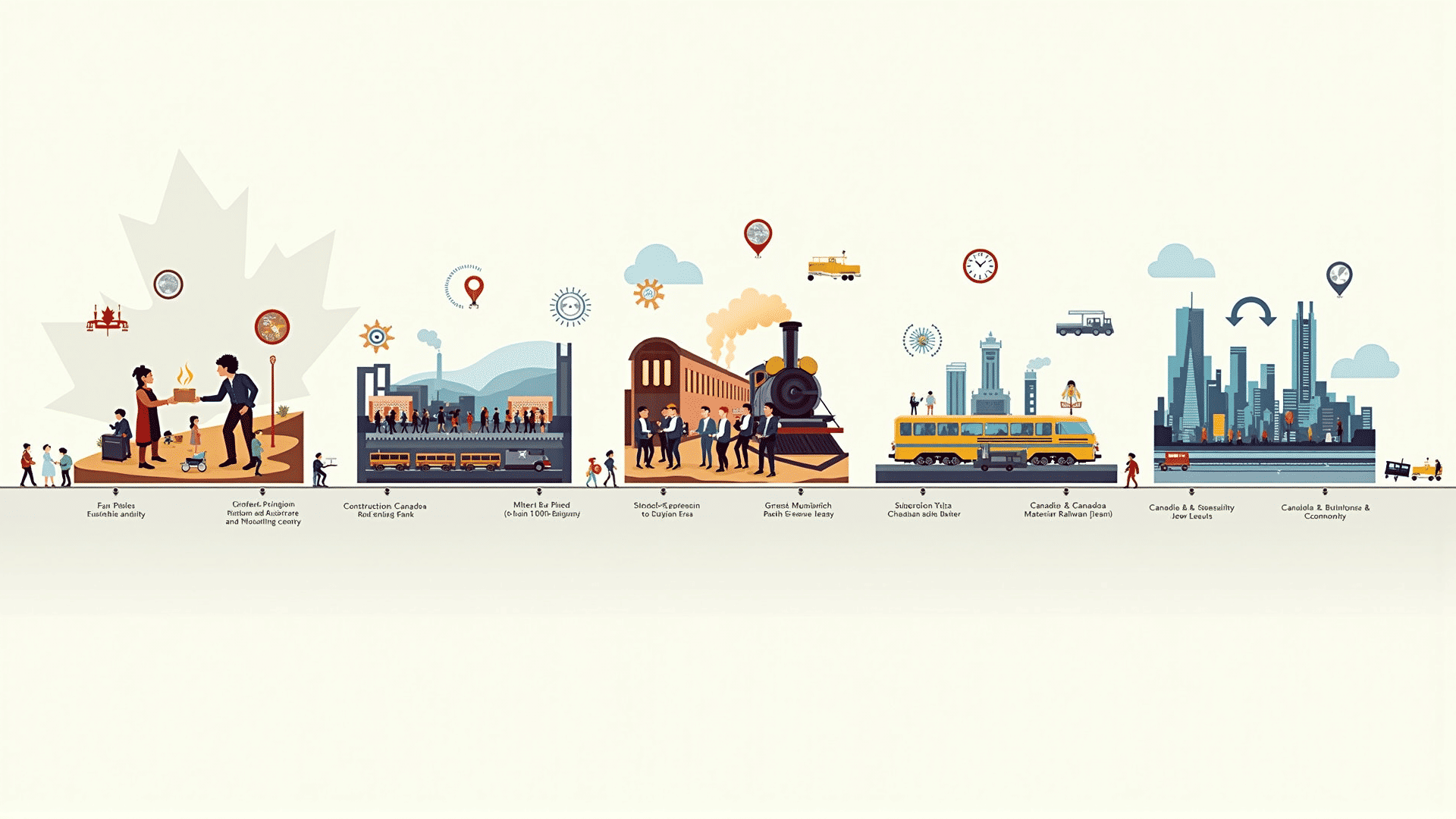Canada's economic history features a series of transformative events that have left a lasting impact on the nation's development and its role in the global economy. Understanding these events provides insight into how modern Canada came to be.
-
The Fur Trade Era: Beginning in the 16th century, the fur trade was fundamental to early Canadian economic activity. European demand for beaver pelts fueled exploration and settlements, fostering partnerships and sometimes conflicts with Indigenous communities. This early economy set the stage for Canada’s place in early global trade networks.
-
The Canadian Pacific Railway (CPR): Completed in 1885, the CPR united the vast territories of Canada, physically and economically, from coast to coast. This vital infrastructure project facilitated the movement of goods and people, encouraged immigration, and promoted the development of new industries. It was pivotal in securing Canada's economic independence and expanding its borders.
-
The Wheat Boom and Agricultural Expansion: The early 20th century saw significant growth in Canada’s agriculture sector, particularly in the Prairie Provinces. Wheat exports became vital to the national economy, drawing immigrants and investment to the region and enhancing Canada’s reputation as a global breadbasket.
-
The Great Depression: The global economic downturn of the 1930s devastated Canada’s resource and industrial sectors, leading to widespread unemployment and poverty. This period was critical for fostering social and economic reforms, including the establishment of government interventions and the birth of the welfare state.
-
World War II and Post-war Prosperity: The war effort spurred industrial production and technological advancements, pulling Canada out of the depression. Post-war, Canada experienced substantial growth, marked by an expanding manufacturing sector, increased trade, and a burgeoning middle class, laying the foundation for today’s diversified economy.
-
The Auto Pact: Established in 1965, the Canada-United States Automotive Products Agreement transformed the Canadian automotive industry. This milestone removed tariffs, allowing for the seamless trade of automobiles and parts across the border, which fostered a robust and integrated auto industry and created numerous jobs.
-
The enactment of the North American Free Trade Agreement (NAFTA): Implemented in 1994, NAFTA reduced trade barriers between Canada, the United States, and Mexico. The agreement greatly affected the Canadian economy by boosting exports and increasing accessibility to international markets, solidifying its place in the global economic community.
-
The 2008 Financial Crisis: Although less severely impacted than some other nations, Canada felt the global downturn's effects. The crisis led to heightened regulations in the banking sector and showcased the robustness of Canada's financial systems. The swift recovery underscored the country's economic resilience and prudent fiscal management.
These events collectively highlight Canada’s journey towards becoming a diversified and modern economy. Understanding these historical milestones is crucial for appreciating the country's current socioeconomic dynamics and its ongoing development on the world stage.
